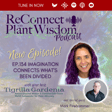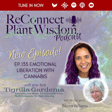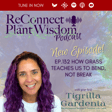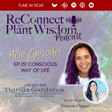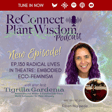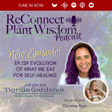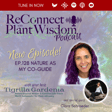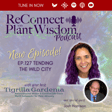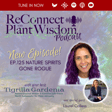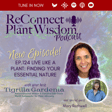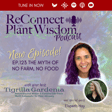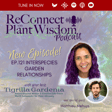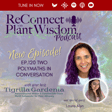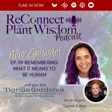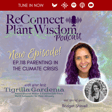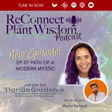
Ep.102 Nature Data and Digital Botany with Sophi Gardner
What happens when you give plants a visual voice in the digital world? In this episode, I talk with Sophie Gardner, a pioneering artist who creates stunning visual and audio expressions generated directly from plant data.
Our conversation explores the deep interconnection between plants, creativity, and technology—and how plants can inform our artistic processes in ways we never imagined. Sophie shares how plants “doodle” in 3D space, create abstract self-portraits, and even orchestrate bird-song-like soundscapes. This is more than art—it's co-creation at a new level of consciousness.
We also talk about rest, resilience, and soft power in a world addicted to constant output. There’s wisdom here for all of us trying to live more present, connected lives—especially if you're a nature-inspired creative, artist, or visionary.
This one will expand your mind and nourish your soul. 🌱💫
Topics Covered about Plant-Generated Art
➡️ How plants create visual “self-portraits” through live-coded systems
➡️ Why presence, not performance, is central to creative evolution
➡️ Rest as a form of natural intelligence
➡️ The role of plant co-creation in future-focused genres like solarpunk and ecopunk
Chapters
00:00 Introduction
06:58 Sacred Self and Nature
13:26 Who Gives A Crap?
15:27 Holistic Thinking for Mental Health
23:33 Nature's Wonder and Intellectualization
37:12 Interconnectedness of Human and Non-Human Entities
42:52 Gratitude and Connection in Daily Life
46:39 Intuition and Non-Logic in Consciousness
53:21 One Sacred Earth Project
Resources Mentioned
🌱 Music of the Plants
🌱 flow & echo (Sophie Gardner’s site)
🌱 Personalized mentorship with me and the Plants
Expanded Show Notes
☝🏽ReConnect with Plant Wisdom podcast Ancient and modern knowledge from biology to spirituality about the wondrous ways plants help you lead a Naturally Conscious life.
Subscribe here and on your favorite podcast player.
👉🏽 Join the Naturally Conscious Community to nourish human-plant relationships
// Get to Know Me, Tigrilla //
// Let's Work Together //
// Shop from EcoConscious Partners //
Music of the Plants
More Partners: https://tigrillagardenia.com/shop/
Opening and Closing music by @Cyberinga and Poinsettia.
// Let's Connect on Social // Facebook | Instagram | LinkedIn | Youtube

